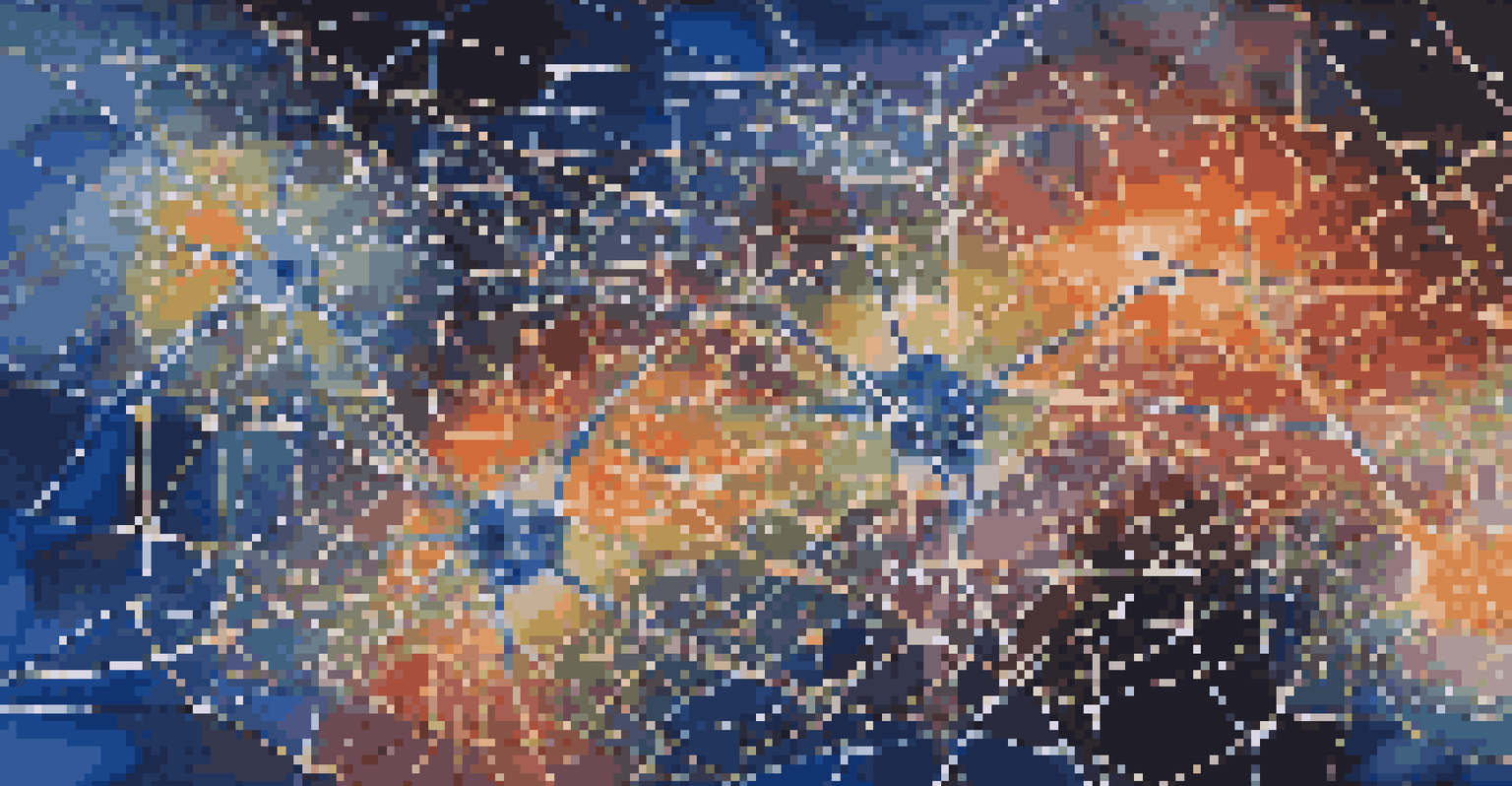Building a Neural Network from Scratch: A Step-by-Step Guide

Understanding the Basics of Neural Networks
Before diving into building a neural network, it's essential to grasp the fundamentals. A neural network is a computational model inspired by the way human brains process information. It consists of interconnected nodes, or 'neurons,' that work together to analyze and learn from data.
The greatest problem in communication is the illusion that it has been accomplished.
Think of a neural network as a complex recipe where each ingredient (data) is processed in a specific way to yield a final dish (output). Just like cooking, understanding the ingredients and the process is crucial for achieving the desired outcome. The structure typically includes an input layer, hidden layers, and an output layer.
Having a solid understanding of these components sets the stage for the construction and training of your neural network, which is what we’ll explore in the following sections.
Setting Up Your Development Environment
To build a neural network from scratch, you need a suitable development environment. This usually involves installing Python, a popular programming language for machine learning projects. You'll also want to set up libraries like NumPy for numerical calculations and Matplotlib for visualization.

Think of your development environment as your workshop. Just as a carpenter needs tools to craft furniture, you need the right software to develop your neural network. Make sure your system is ready by installing these tools and libraries to ensure a smooth building process.
Neural Networks Mimic Human Brains
Neural networks are computational models inspired by the way human brains process information, consisting of interconnected 'neurons' that learn from data.
Once your environment is set up, you will have a solid foundation to start coding your neural network, allowing you to focus on the logic and structure rather than technical hurdles.
Creating the Neural Network Structure
The next step is to define the architecture of your neural network. This involves deciding how many layers you will have and how many neurons will reside in each layer. A common starting point is a simple feedforward network with an input layer, one hidden layer, and an output layer.
What we learn with pleasure we never forget.
Imagine building a house; the layers of the network are like different floors. Each floor has a specific purpose, whether it’s gathering information or producing results. Here, the hidden layer acts as the brain of the network, processing the input data before passing it to the output layer.
By structuring your neural network thoughtfully, you set the stage for effective learning and performance, which we will further optimize in the subsequent steps.
Implementing the Forward Propagation
Forward propagation is the process through which input data is passed through the network to generate an output. Each neuron receives input, applies a weight, and passes the result through a non-linear activation function. This step is crucial because it allows the network to learn complex patterns.
Think of forward propagation like sending a message through a series of friends. Each friend (neuron) adds their unique twist to the message (input) before passing it along. This transformation is vital in helping the network understand and interpret the data effectively.
Training Involves Forward Propagation
The training process requires forward propagation to pass input data through the network, allowing it to learn complex patterns and make predictions.
Implementing this step correctly ensures that your neural network can process information and make predictions, which will be refined during the training phase.
Calculating the Loss Function
Once you have the output from your neural network, the next step is to evaluate its accuracy using a loss function. This function measures the difference between the predicted output and the actual output, providing a numerical value that indicates how well the network is performing.
You can think of the loss function as a scorecard for a game. The lower the score, the better the performance of your neural network. Common loss functions include Mean Squared Error for regression tasks and Cross-Entropy Loss for classification tasks.
By calculating the loss, you can identify how far off your predictions are and make informed adjustments to improve your model in the next steps.
Training the Neural Network with Backpropagation
Training the neural network involves updating the weights based on the errors calculated from the loss function. This process, known as backpropagation, adjusts the weights in the network to minimize the loss. Essentially, it helps the network learn by correcting its mistakes.
Imagine teaching a child to throw a ball. Each time they miss, you guide them to adjust their aim. Backpropagation works similarly, using the error feedback to refine the network’s weights, allowing it to improve over time.
Fine-Tuning Improves Model Accuracy
Evaluating and fine-tuning your neural network using metrics like accuracy and precision is crucial for optimizing its performance in real-world applications.
This iterative process of forward propagation and backpropagation is crucial for enhancing the network's accuracy, ultimately leading to a more robust model.
Evaluating and Fine-Tuning Your Neural Network
Once your neural network is trained, it’s essential to evaluate its performance on a separate test dataset. This helps you understand how well your model generalizes to new, unseen data. Metrics such as accuracy, precision, and recall are commonly used to assess performance.
Think of this phase as a final exam for your neural network. Just like students need to prove their knowledge on a test, your network must demonstrate its ability to make accurate predictions. If the performance is lacking, you might need to fine-tune parameters like learning rate, number of hidden layers, or even the activation functions.

By carefully evaluating and adjusting your model, you can optimize it for real-world applications, ensuring its effectiveness in solving practical problems.
Deploying Your Neural Network in Real-World Applications
After successfully building and fine-tuning your neural network, it’s time to deploy it for real-world applications. This could involve integrating it into a web application, a mobile app, or even a standalone software solution. The deployment process varies based on the intended use case and the technology stack you choose.
Think of deploying your neural network as launching a new product. After all the hard work in development, it’s exciting to see it in action and making a difference. Whether it’s for image recognition, natural language processing, or predictive analytics, the potential applications are vast.
By sharing your model with the world, you not only showcase your skills but also contribute to innovation and problem-solving in various fields, completing the journey you started with just a basic understanding of neural networks.